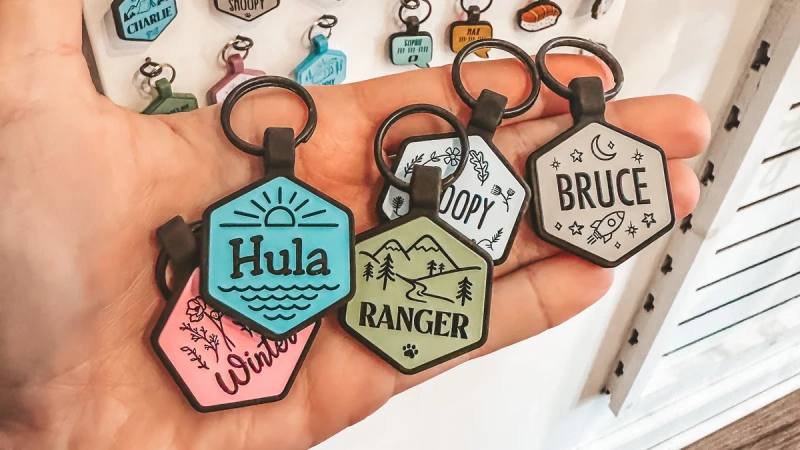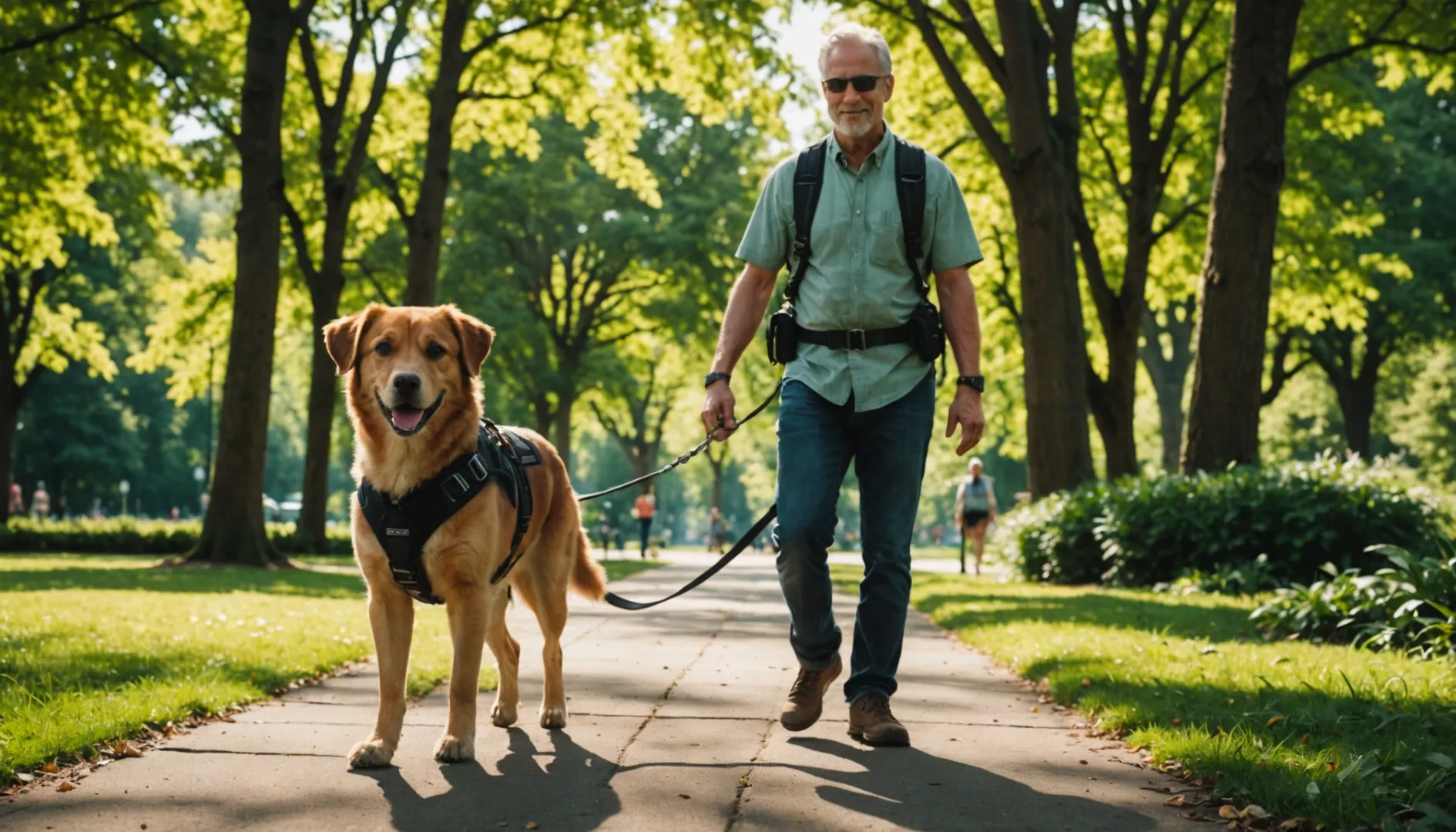
Ever felt like your daily walk with your dog turns into a wrestling match? I sure have, and switching to a front-leash attachment on a harness changed everything.
Front-leash attachments on dog harnesses give you better control, ease pulling behavior, and make training sessions more effective by promoting natural corrections and enhancing communication with your furry friend.
Choosing the right harness isn’t just about immediate benefits—it’s about understanding your dog’s unique needs. When I started using a front-clip harness, the transformation was clear, but finding the perfect fit took some trial and error. Let’s explore what makes a great harness to ensure you and your dog enjoy every step together.
Front-clip harnesses reduce dog pulling effectively.True
Front-clip harnesses steer dogs to the side, discouraging pulling.
Back-clip harnesses offer better control than front-clip ones.False
Front-clip harnesses provide better control by redirecting dogs.
How Does a Front-Leash Attachment Work?
Ever wondered why some dog owners swear by front-leash attachments? Let me share how they revolutionized my walks with my furry friend.
A front-leash attachment on a dog harness works by gently guiding your dog towards you when they pull, making walks more manageable. By clipping the leash to the front, it naturally redirects their attention back to you, effectively managing pulling behavior and enhancing your control.
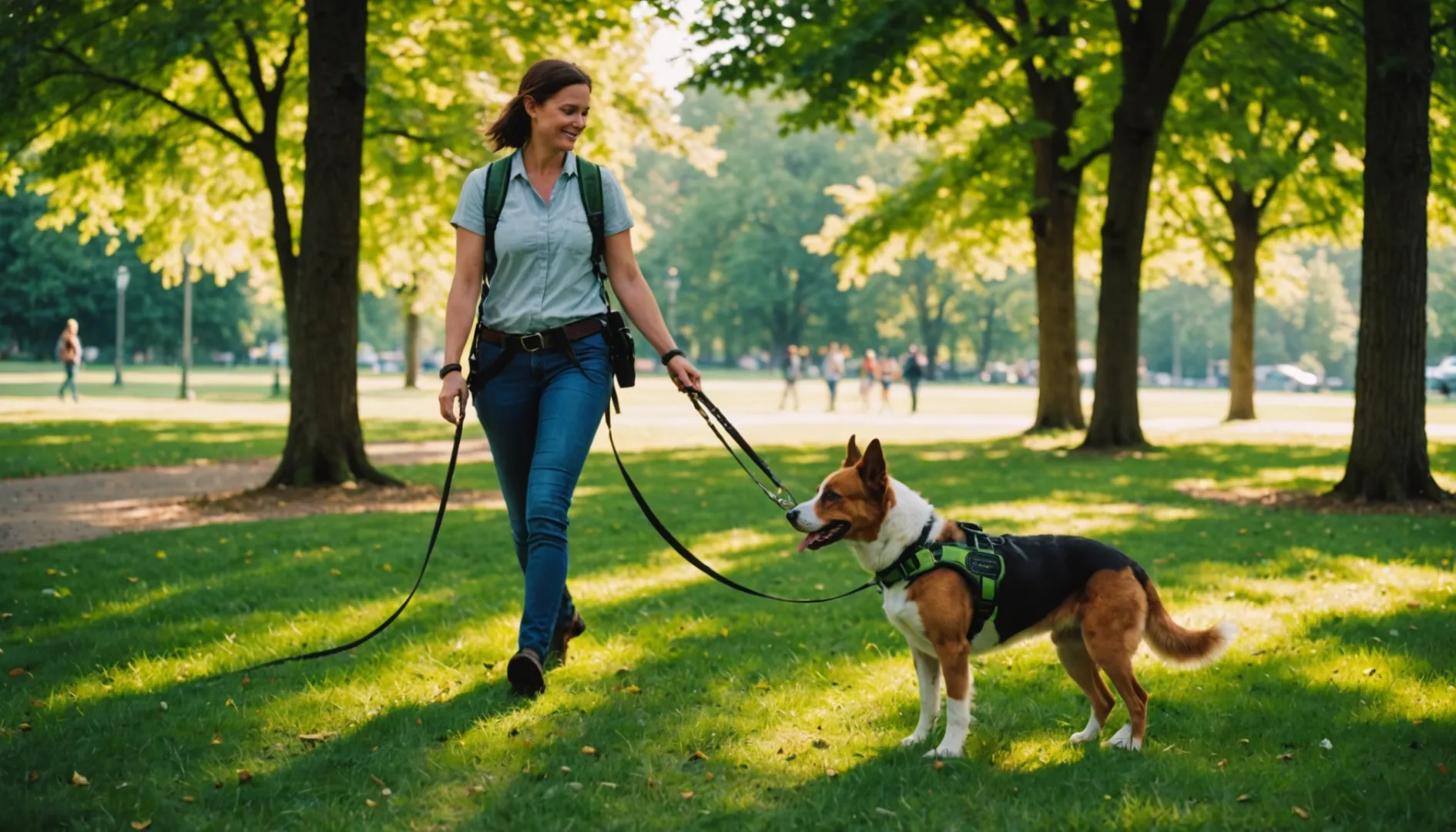
Mechanics of a Front-Leash Attachment
I remember my first few walks with Max, my high-spirited retriever. He’d charge ahead, turning our strolls into mini tug-of-war matches. That all changed when I discovered the front-leash attachment. This nifty feature sits right on the dog’s chest, and when Max tried to pull, it would gently steer him back towards me. It was like magic—he’d pivot instead of powering forward. This little adjustment transformed our outings, making them more enjoyable for both of us and improved our communication without words.
Training Benefits
Harnessing Max’s energy felt daunting at first, but with the front-leash attachment, it turned into a training opportunity. I could see how these harnesses encourage dogs to focus on their owners. Each time Max pulled, the harness redirected his energy towards me, allowing us to make eye contact and engage more during our walks. Many trainers recommend this kind of harness for the same reason—it helps reinforce positive behavior gently, which is ideal for energetic pups like Max.
Design Considerations
Choosing the right harness was another hurdle. I wanted something that wouldn’t chafe or restrict Max’s movement. So, I looked for adjustable straps and padding1 to ensure comfort and a snug fit. Some harnesses even offer both front and back attachments, giving flexibility based on your dog’s needs and our walking environment.
Potential Challenges
However, it’s not all smooth sailing. There were times when Max’s exuberance led to tangles, particularly when he decided to chase squirrels. Keeping an eye on his movements became crucial. I learned that some harness designs include anti-tangle features, which can help mitigate this issue by choosing wisely and monitoring Max’s antics; our walks became less chaotic and more about enjoying each other’s company.
Front-clip harnesses reduce dog pulling behavior.True
The front attachment redirects the dog, discouraging pulling over time.
Front-clip harnesses are unsuitable for all dogs.False
They suit most dogs but require proper fit and adjustment for comfort.
Why Do Experts Recommend Front-Clip Harnesses for Training?
Ever wondered why your dog seems to walk you instead of the other way around?
Experts recommend front-clip harnesses because they provide better control and reduce pulling, making dog training more effective and walks more enjoyable.
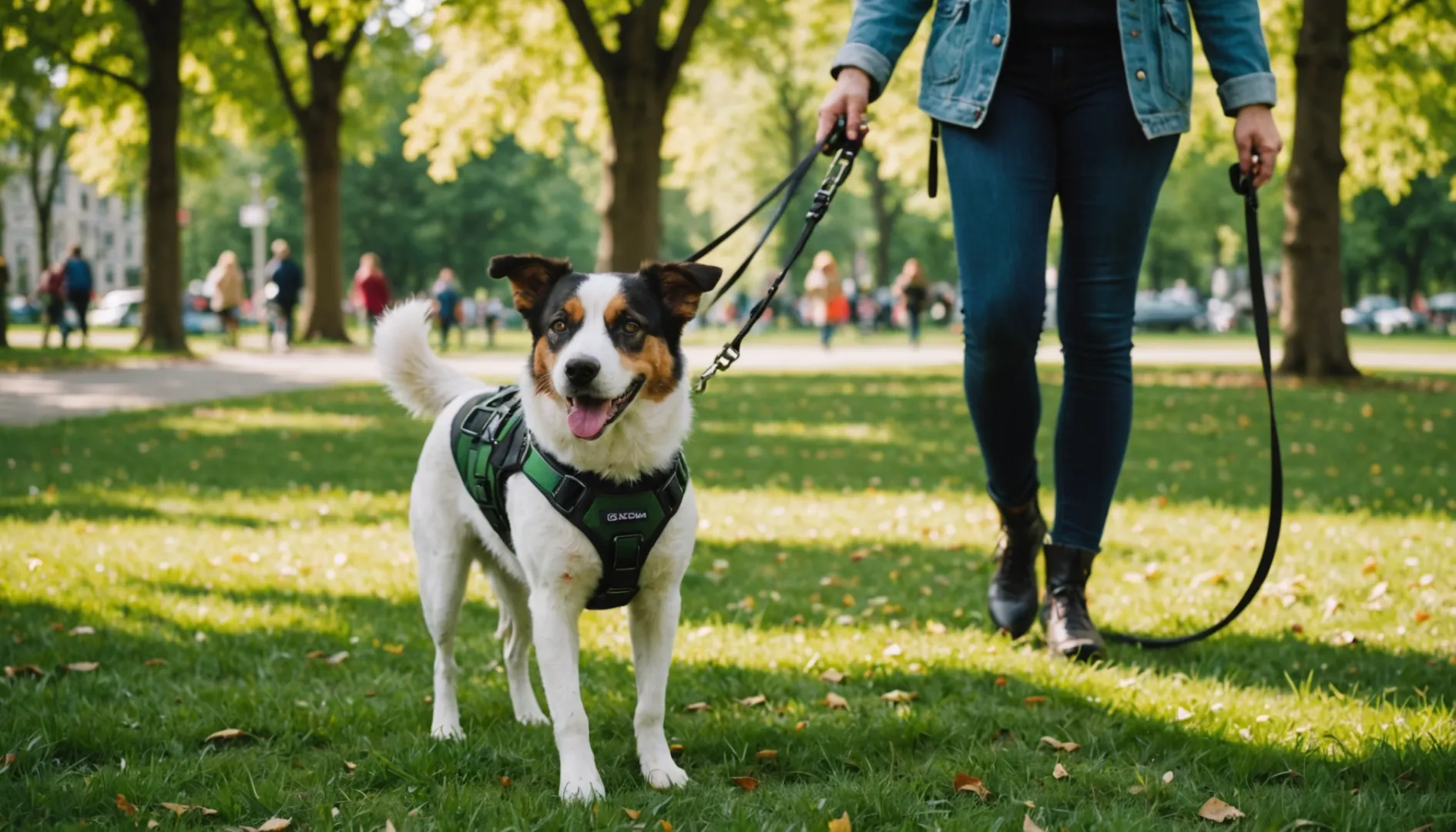
Improved Control and Steering
Imagine you’re out on a morning stroll, coffee in one hand, leash in the other. With a front-clip harness, I feel like I’m finally leading the parade. When my dog starts pulling towards an irresistible scent or an interesting squirrel, the harness gently steers them back towards me without the usual tug of war. It’s like having a secret weapon for smooth walks! Learn more about steering techniques2.
Effective in Reducing Pulling Behavior
I remember those early days when every walk felt like a workout, with my dog pulling as if they were auditioning for the Iditarod. Switching to a front-clip harness was a game-changer. As soon as they pull, the harness nudges them to turn to the side, subtly teaching them to stay by my side. Gradually, our walks became less of a battle and more of a bonding experience. Explore pulling behavior solutions3.
A Superior Training Tool
Training sessions have become much more productive since I started using a front-clip harness. When my pup pulls, it naturally encourages them to look at me for guidance. It’s as if we’re having a silent conversation where I can redirect their attention and reward good behavior, building a connection that makes training feel less like a chore and more like teamwork. Training tips with front-clip harnesses4.
Considerations for Proper Use
Of course, no tool is perfect without proper use. I learned the hard way that fit is everything. A harness that’s too tight can chafe, while one that’s too loose can lead to awkward tangling situations. Opting for adjustable straps and some padding ensures comfort and functionality. Some days, I even appreciate the dual attachment options, allowing flexibility depending on our mood or training focus. Find fitting tips here5.
Front-clip harnesses reduce dog pulling behavior.True
Front-clips redirect dogs sideways when they pull, discouraging pulling.
Front-clip harnesses cause discomfort for all dogs.False
Properly fitted harnesses with padding ensure comfort for most dogs.
What Should You Look for in a Front-Clip Harness?
Finding the perfect front-clip harness can make every walk with your dog a joy. Here’s what to keep in mind when choosing one.
When choosing a front-clip harness, focus on adjustability, durability, and comfort to ensure effective control and safety during walks.

Understanding the Mechanics of Front-Clip Harnesses
A few months ago, I found myself in the bustling aisles of a pet store, staring at a myriad of harnesses. My dog, Max, had developed quite the reputation for being a "puller." I needed something that would help us both enjoy our walks more. That’s when I discovered the front-clip harness.
The genius behind this design is its front chest leash attachment. Unlike traditional collars, this setup redirects your dog’s movement towards you if they pull, offering gentle guidance without exerting too much force. Understanding this mechanism6 was eye-opening for me and helped me realize how important the right harness is.
Key Features to Consider
Adjustability
When Max first tried on his harness, it was clear that getting the right fit was crucial. With adjustable straps, I could tailor it perfectly to his unique shape. It’s like finding that perfect pair of jeans—snug but comfortable. Make sure your harness allows two fingers to slide under the straps easily to prevent any discomfort or injury.
Durability and Material
With Max’s energy, I knew I needed a harness that could withstand some serious wear and tear. I opted for one made of nylon, which is tough enough to handle his enthusiasm without giving out on us. Explore different materials7 to find what suits your dog’s needs best.
Comfort and Design
Comfort was key for Max, who has a knack for finding ways to squirm out of anything uncomfortable. Padded areas around the chest and shoulders not only kept him secure but also prevented any rubbing or chafing during our long walks. Reflective stitching was a bonus for those evening strolls, enhancing visibility.
Evaluating Training and Behavioral Benefits
I noticed an improvement in Max’s behavior almost immediately. The front-clip harness didn’t just help with control—it was like having a silent trainer by my side. It naturally discouraged pulling, redirecting his energy into walking calmly beside me. Learn more about training with harnesses8 to make the most out of this tool.
Versatility of Use
Some days, I like switching things up with Max’s harness that offers dual attachment points. This gives us the flexibility to adapt to different walking scenarios or training needs as he grows and learns. Investigating these options can be beneficial for long-term use.
By considering these factors, I’ve found that choosing the right front-clip harness not only keeps Max safe but also strengthens our bond during walks. Always remember: the right choice ensures safety, comfort, and improved communication between you and your furry friend.
Front-clip harnesses improve dog control during walks.True
Front-clip harnesses encourage dogs to pivot towards owners, enhancing control.
Front-leash attachments increase pulling behavior in dogs.False
They reduce pulling by steering dogs sideways, discouraging forward pulls.
Are There Any Downsides to Using a Front-Leash Attachment?
Exploring front-leash attachments? Discover their potential drawbacks before making the leap.
While front-leash attachments offer great control, they might lead to tangling, discomfort, or reduced versatility. Ensuring a proper fit and being mindful of these challenges can enhance your dog’s walking experience.
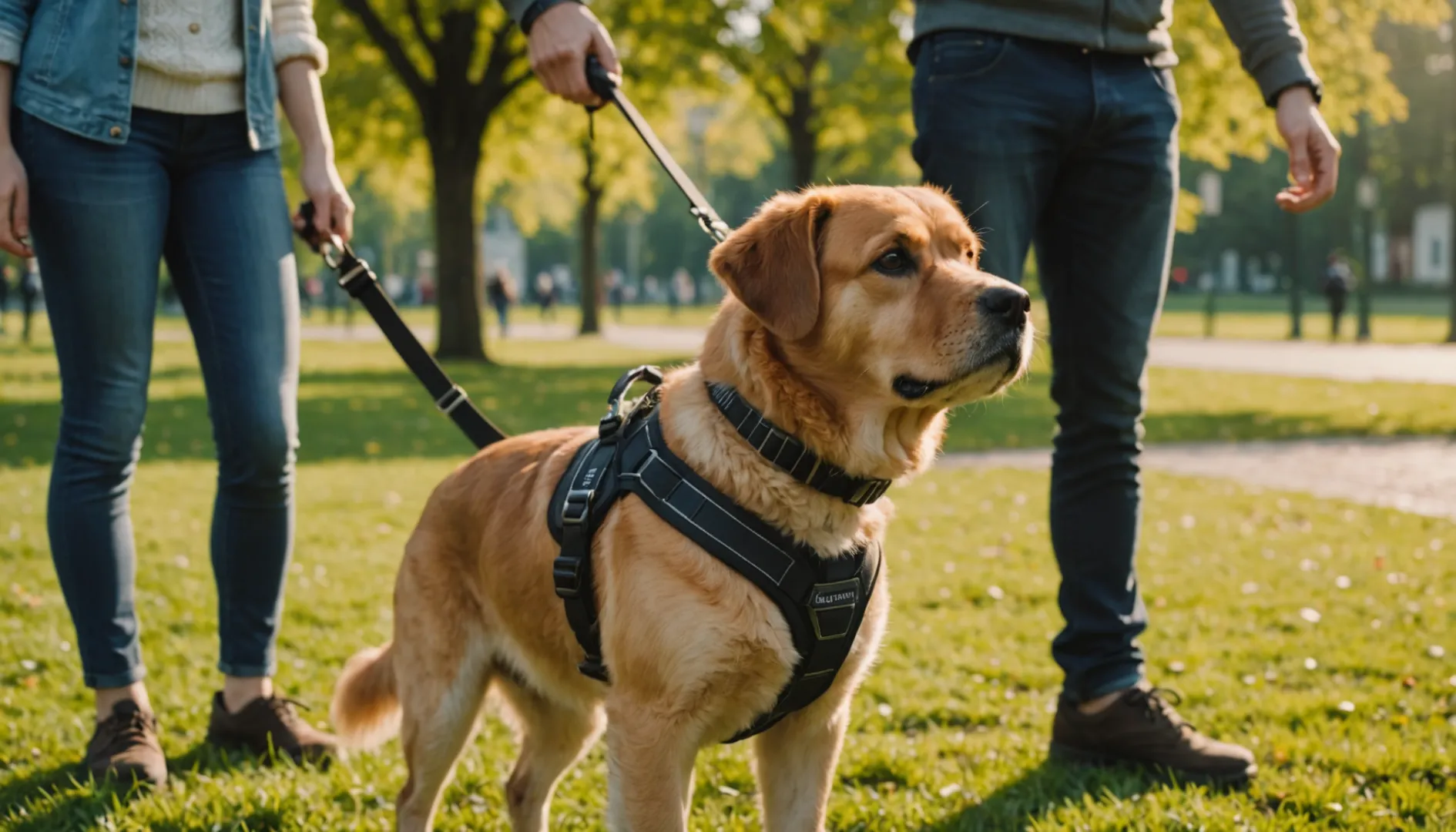
Potential for Tangling
Let me tell you, one of my biggest surprises came when I first used a front-leash attachment with my overly enthusiastic pup. It seemed like a perfect solution until our first walk turned into an unintended game of "wrap the leash around the legs." If your dog is anything like mine—darting here and there with the enthusiasm of a kid at a candy store—be prepared for some tangling. Keeping a close eye on their movements helps, and exploring tangle-free options9 can be a real lifesaver.
Comfort and Fit Challenges
Ah, the never-ending quest for the perfect fit! Just like trying on clothes in a fitting room, finding the right harness isn’t always straightforward. An ill-fitting harness led my dog to do the doggie equivalent of scratching an itch you can’t quite reach, which was heartbreaking to watch. Adjustable straps and some padding worked wonders for us. Regularly checking the fit, especially during those growth spurts, is essential. A well-fitted harness10 is key to a happy, comfortable pup.
Limitations in Versatility
Initially, I thought a front-leash attachment was a one-size-fits-all solution—until I found myself in situations that required more flexibility. Some walks are more like training sessions, while others are just leisurely strolls. Dual attachment points have given me the freedom to switch things up based on our needs. If you’re looking for this kind of adaptability, considering dual-clip options11 could be a game-changer.
Training Challenges
Training with a front-leash harness can be a journey. My dog initially resisted like it was his personal mission to maintain his pulling ways. With some patience, consistency, and a pocketful of treats, we eventually found our groove. Understanding the training process12 helped us both transition more smoothly into better walking partners.
Front-clip harnesses eliminate all pulling behavior.False
While effective, front-clip harnesses do not completely eliminate pulling; they reduce it.
Front-clip harnesses can cause tangling issues.True
These harnesses can tangle if the dog pulls hard or moves erratically.
Conclusion
Front-leash attachments on dog harnesses improve control, reduce pulling, and enhance training effectiveness by redirecting dogs’ attention, making walks more enjoyable for both pets and owners.
-
Find top-rated adjustable harnesses that ensure comfort and fit. ↩
-
Discover expert insights on steering methods using front-clip harnesses. ↩
-
Understand how physics helps decrease pulling behavior effectively. ↩
-
Learn how these harnesses enhance training efficiency and communication. ↩
-
Ensure your dog’s comfort with proper fitting advice. ↩
-
Learn the science behind front-clip harnesses for better decision-making. ↩
-
Discover durable materials that ensure long-lasting use of the harness. ↩
-
Understand how these harnesses aid in effective dog training. ↩
-
Discover designs that minimize leash tangling during walks. ↩
-
Learn techniques for achieving a comfortable and secure fit. ↩
-
Explore the advantages of using a versatile dual-clip harness. ↩
-
Find strategies for effectively training dogs with these harnesses. ↩


